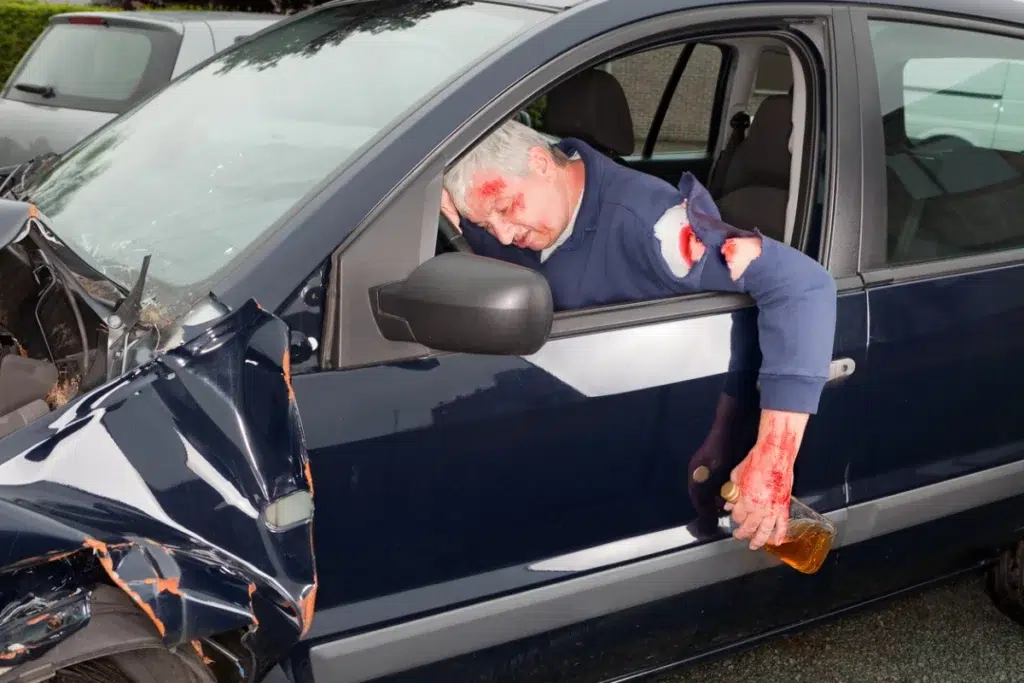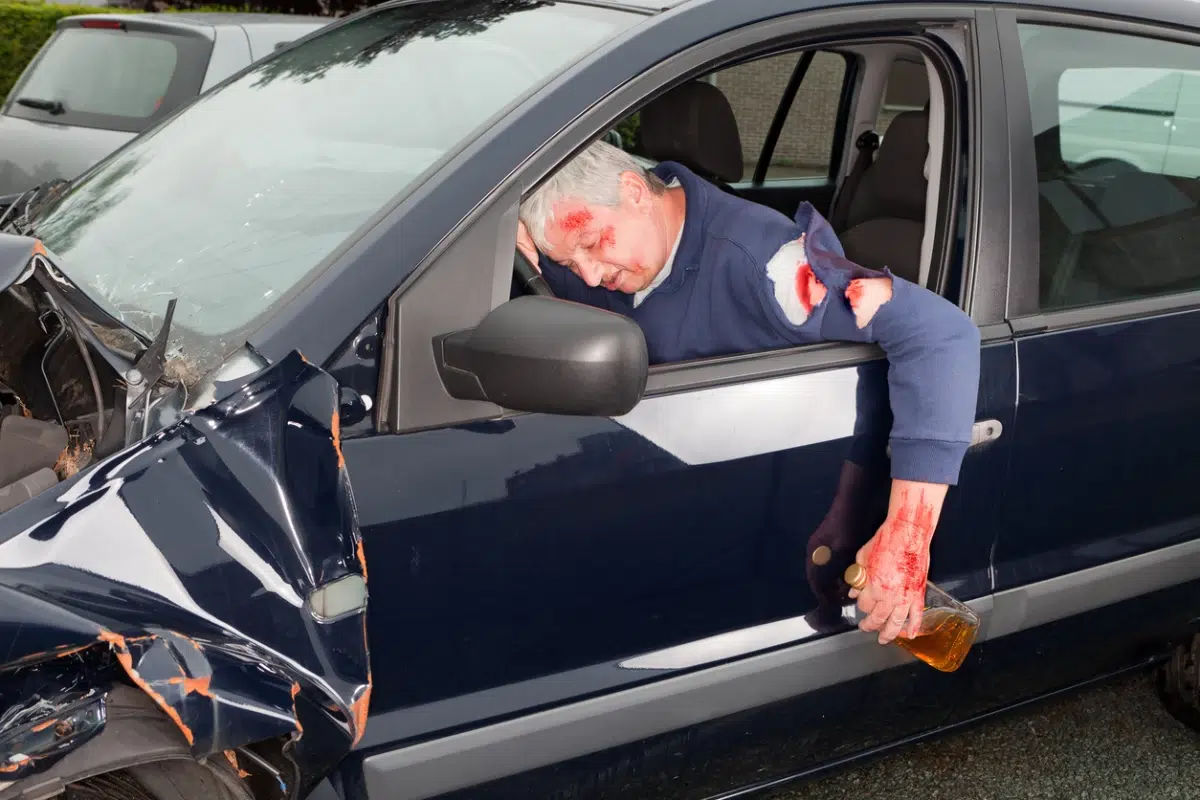Share

One late-night collision can turn a regular DUI into a life-changing felony. When someone gets hurt, California courts and prosecutors treat the case very differently.
At Gressley & Donaldson, LLP, we have seen how a DUI causing injury can subject someone to a much greater sentence, raise fines, and threaten a driver’s future. The sections that follow walk through the laws, the sentencing math, and the defense tools that may keep a tough moment from becoming a permanent record.
Felony DUI with Bodily Injury: Definition and Scope
California Vehicle Code generally treats most driving under the influence offenses (DUI) as misdemeanor offenses under Vehicle Code section 23152, especially when in the commission of the DUI offense, no one else is harmed and the incident involves only a basic violation of the California vehicle code.
However, the legal consequences under the California Vehicle Code with respect to a DUI causing injury. In such circumstances, the penalties escalate significantly if the driver’s actions lead to serious injury to another person. Under California Vehicle Code 23153, the DUI can be elevated to a felony charge if the dui causing injury caused a substantial injury.
Under California Vehicle Code 23153, a person who is driving under the influence of alcohol or drugs, and who either violates a traffic law, neglects a legal duty, or fails to exercise ordinary care, and causes injury to another person as a result, can be charged with felony DUI causing injury, which is a felony offense. Vehicle Code 23153 is a wobbler offense, meaning it can be charged as either a felony DUI or misdemeanor DUI. Whether a Vehicle Code 23153 DUI causing injury is charged as a felony or misdemeanor typically depends on the following factors: prior DUI convictions, the blood alcohol concentration of the driver, whether the driving was gross negligence, and the severity of the bodily injury suffered.
In order for the prosecution to secure a conviction under this section, they must establish three key elements:
- That the driver was impaired, either by alcohol, drugs, or both.
- That the driver broke a traffic law, neglected a duty, or acted negligently.
- That this violation or negligent act was the direct cause of the victim’s DUI, causing injury.
This is what sets a felony DUI apart from a standard misdemeanor DUI. In a misdemeanor case, the legal question focuses solely on whether the driver was impaired. In contrast, a felony DUI with injury introduces additional layers of complexity, requiring proof that the impairment led to wrongful conduct and that this conduct resulted in actual bodily harm to another person.
These added components dramatically raise the legal stakes, potentially leading to longer jail or prison sentences, increased fines, harsher license penalties, and a lasting mark on the defendant’s criminal record.
Key Factors That Influence Sentencing
When someone is convicted of a felony DUI involving bodily injury in California, the sentencing phase becomes critical. Under Vehicle Code 23153, judges have a range of discretion in choosing the final penalties. For a DUI causing injury under vehicle code 23153, a judge can sentence someone 16 months to 3 years in the state prison, or grant them probation, with up to one year in the county jail. If a person convicted of DUI causing injury is granted probation, under the California vehicle code, the person must be given many statutory probation conditions for the felony conviction. The vehicle code specifies those conditions.
While statutory guidelines provide a framework, the actual outcome often hinges on several specific and fact-sensitive factors. Below are the most commonly debated elements that can greatly impact sentencing decisions.
Degree of Harm to the Victim
Perhaps the most influential factor in assessing the potential outcome of a Vehicle Code 23153 charge is the extent of the injuries suffered by the victim. Minor physical injuries, such as abrasions, soft tissue damage, or soreness, are usually treated with lower-term sentences, especially if the driver has no prior record. Such injuries could be a basis to lower the Vehicle Code 23153 charge to a misdemeanor. However, if the victim suffers what’s legally defined as “great bodily injury” (GBI), the consequences are far more severe.
Under Penal Code §12022.7, GBI includes significant injuries such as broken bones, internal injuries, head trauma, or any injury requiring extended medical care. When proven, this can lead to a three or five-year sentence enhancement that is added on top of the base felony DUI penalty. A five-year sentence enhancement can be imposed on top of a vehicle code 23153 conviction if the victim suffers paralysis or is ever put in a comatose state.
Presence of Aggravating Circumstances
Judges also consider whether any aggravating factors were present during the offense, alongside the defendant’s criminal history. These are facts that indicate the defendant posed a heightened risk to others or acted with particularly poor judgment. Common aggravating elements include:
- A blood alcohol content (BAC) well above the legal limit, especially .15% or higher
- Reckless or excessive speeding
- Driving with passengers, especially minors
- A prior DUI felony conviction within the last ten years
Each of these factors suggests elevated danger to the public and may push the judge to impose the maximum term allowed by law.
Victim Impact Statements
Victim involvement in the sentencing process is another key component. California law allows victims to submit written or oral impact statements detailing the effect of the DUI incident on their lives. These may include:
- Descriptions of physical pain or ongoing medical conditions
- Medical bills and out-of-pocket expenses
- Loss of income or missed work due to recovery
- Emotional trauma or psychological impact
Judges often give considerable weight to these personal accounts, especially if they demonstrate ongoing suffering or financial hardship. A compelling victim statement can influence the court toward imposing a harsher sentence.
Why Legal Strategy at Sentencing Matters
Because injury level, aggravating conduct, and victim testimony can alter the outcome by months or even years, the sentencing phase demands strong advocacy. An experienced defense attorney can challenge exaggerated injury claims, present mitigating evidence (such as remorse, rehabilitation, or a clean prior record), and argue against unwarranted sentence enhancements.
The way these issues are framed and documented can make a significant difference in minimizing custody time and preserving the client’s future.
Sentencing Guidelines and Penalties Under California Law
The statute sets a triad of possible California state prison terms. Which one applies depends on the factors just outlined.
| Injury Level | Low Term | Mid Term | High Term |
| Minor injury | 16 months | 2 years | 3 years |
| Great bodily injury† | 16m + 3y | 2 years + 3 | 3 years + 3 |
Add three years for the enhancement; multiple victims can raise the term by one year each, leading to potential county jail time.
Beyond custody, the court often orders:
- Restitution for medical bills and lost wages.
- Fines that can approach $5,000 before penalty assessments.
- Mandatory license suspension for at least one year, followed by ignition-interlock use.
- An eighteen- to thirty-month DUI education program and up to five years of formal probation.
If the case counts as a “strike” under the Three Strikes Law, any future felony can double the next sentence, making a careful defense now essential.
Prosecutorial Strategy and Burden of Proof
In any felony DUI case involving bodily injury, the prosecution carries the full burden of proof. Before a jury can convict, the State must demonstrate, beyond a reasonable doubt, under California Penal Code section, that the defendant was (1) under the influence of alcohol or drugs, (2) committed an unlawful act or was negligent, and (3) that this act or negligence directly caused another person’s injury. Each of these elements must be established; if even one falls short, the case can collapse.
To meet this demanding legal standard, prosecutors rely on multiple forms of evidence, often working to weave a compelling narrative that links intoxication to injury. Some of the most common tools used in DUI prosecutions include:
1. Toxicology Reports
Blood and breath test results are often the centerpiece of the State’s case. These toxicology reports indicate the driver’s blood alcohol concentration (BAC) or the presence of controlled substances at the time of the incident. A BAC of 0.08% or higher establishes legal impairment, but prosecutors may argue for impairment even with lower levels if other signs of intoxication are present, especially in cases with multiple DUI criminal convictions. In drug-related DUIs, the challenge lies in proving active impairment, not just the presence of a substance.
2. Accident Reconstruction
In more serious crashes, such as those involving injury, the prosecution may employ accident reconstruction professionals. These professionals analyze skid marks, vehicle damage, surveillance footage, and other data to estimate speed, braking distance, and points of impact. Their conclusions aim to show reckless or negligent driving behavior, key to proving the second element of the offense.
3. Eyewitness Testimony and Visual Evidence
Prosecutors often call upon bystanders, victims, or passengers to describe erratic driving, slurred speech, or the driver’s condition after the crash. In addition, dash-camera footage, surveillance video, and even 9-1-1 call audio can be used to support claims of impairment or show the sequence of events leading to the collision.
4. Charge Stacking to Increase Leverage
A common prosecutorial tactic in DUI causing injury cases is “charge stacking,” adding additional allegations such as:
- Reckless driving
- Hit-and-run
- Driving with a suspended license
- Child endangerment (if minors were present)
Each added count increases the potential sentence and ramps up pressure on the defendant. Even if some felony DUI charges are weak or unsupported, their inclusion can raise the perceived risk of going to trial. This strategy often serves as leverage to encourage a plea deal unless the defense team effectively challenges and dismisses unfounded charges early in the process.
The Importance of a Proactive Defense
Given the layered nature of these cases, it’s essential for the defense to attack the weakest points in the State’s evidence, whether by questioning the reliability of toxicology tests, disputing the accuracy of accident reconstructions, or discrediting biased or inconsistent witness accounts, particularly focusing on any unlawful act. A skilled legal team can often limit or eliminate inflated charges, shift the narrative, and reduce exposure to the harshest penalties.
Defense Approaches in Felony DUI Bodily Injury Cases
No two crashes are the same, so each defense plan must target the unique gaps in the State’s file. Common angles include:
Questioning causation. A sudden lane change by another driver, a blown tire, or poor road design may be the real reason for the crash. If impairment did not cause the bodily harm, felony liability may fall apart.
Scrutinizing medical proof. Some “injuries” recorded at the scene resolve within days. Obtaining updated records or neutral medical opinions can downgrade the harm, lowering the sentence range.
Challenging BAC results. Faulty calibration, improper blood draw, or rising blood-alcohol arguments can shake confidence in the chemical numbers.
Offering mitigation. A clean history, genuine remorse, early payment for losses, and voluntary treatment often persuade judges to select the low term or stay enhancements.
Long-Term Repercussions of a Felony DUI Conviction Involving Injury
Prison and fines eventually end. Other effects linger.
- Many employers reject applicants with felony records, and some state boards deny or delay licenses for nurses, teachers, and contractors.
- The DMV may label the driver a habitual traffic offender, leading to higher insurance premiums and felony exposure for any future suspended-license stop.
- Felony probation can include surprise searches and travel limits, making family life and work trips harder.
- Expungement is possible after completing probation, but the conviction still counts as a prior if another felony DUI occurs within ten years and cannot erase a strike.
Why Knowledgeable Legal Representation is Key
Felony DUI cases with injuries combine traffic science, medical records, and strict sentencing rules. An attorney who handles only routine misdemeanors may miss critical defenses in a felony crime case like this. With either a misdemeanor or a drunk driving felony, a seasoned criminal defense lawyer can pinpoint weak lab work, retain independent crash professionals, and negotiate for alternate programs such as residential treatment or work-furlough in place of prison.
When the difference between a two-year low term and a seven-year enhanced term hinges on one disputed fact, precise advocacy matters. Gressley & Donaldson, LLP, has built tailored defenses for drivers across Riverside County, often reducing or dismissing enhancements that once seemed automatic.
Defend Your Future – Contact Gressley & Donaldson, LLP, Today
Your freedom, license, and reputation all ride on the next choice you make. Feel free to call 951-319-3199 or visit our website to speak directly with a lawyer who will review the police reports line by line. We answer every question in plain language and build a defense that fits your exact facts. One call can set the plan in motion, including addressing potential driver’s license suspension, and help you move forward with confidence.



